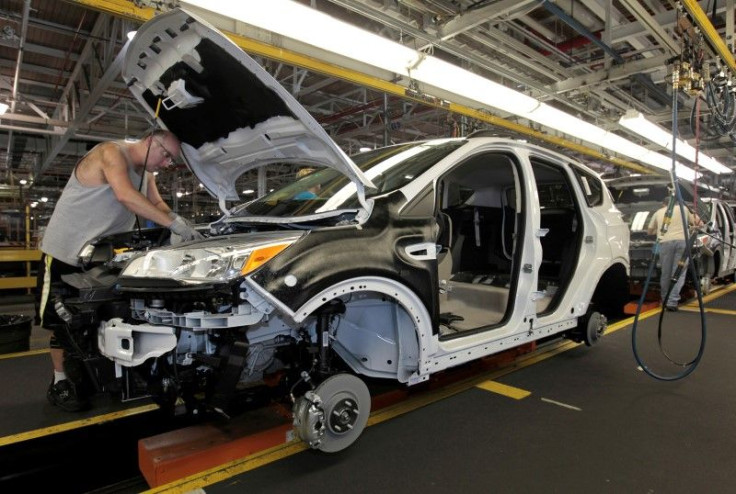US Economy Adds Fewer Jobs In August Than Expected, Likely Ruling Out Interest Rate Hike This Month

U.S. employment growth slowed more than expected in August after two straight months of robust gains and wage gains moderated, which could effectively rule out an interest rate increase from the Federal Reserve this month.
Nonfarm payrolls rose by 151,000 jobs last month after an upwardly revised 275,000 increase in July, with hiring in manufacturing and construction sectors declining, the Labor Department said on Friday. The unemployment rate was unchanged at 4.9 percent as more people entered the labor market.
The report comes on the heels of news on Thursday that the manufacturing sector contracted in August, which had already cast doubts on an interest rate hike at the Fed's Sept. 20-21 policy meeting.
"This mixed jobs report puts the Fed in a tricky situation. It's not all around strong enough to assure a September interest rate hike. But it's solid enough to engender a heated policy discussion," said Mohamed el-Erian, chief economic adviser at Allianz, in Newport Beach, California.
Economists polled by Reuters had forecast payrolls rising 180,000 last month and the unemployment rate slipping one-tenth of a percentage point to 4.8 percent.
Last month's jobs gains, however, could still be sufficient to push the Fed to raise interest rates in December. The rise in payrolls reinforces views that the economy has regained speed after almost stalling in the first half of the year.
Rate hike probabilities for both the September and December meetings rose after remarks last Friday by Fed Chair Janet Yellen that the case for raising rates had strengthened in recent months.
Following the report, financial markets were pricing in a 21 percent chance of a rate hike this month and a 58.6 percent probability in December, according to the CME Fedwatch tool.
The Fed lifted its benchmark overnight interest rate at the end of last year for the first time in nearly a decade, but has held it steady since amid concerns over low inflation.
The dollar was marginally higher against a basket of currencies. Prices for U.S. government bonds fell, while stocks on Wall Street rose.
CALENDAR QUIRKS RESTRAIN PAYROLLS, WAGES
The step-down in employment growth comes after the economy created a total of 546,000 jobs in June and July.
With the labor market near full employment and the economy's recovery from the 2007-09 recession showing signs of aging, a slowdown in job growth is normal. Yellen has said the economy needs to create just under 100,000 jobs a month to keep up with population growth.
The smaller-than-expected rise in payrolls also likely reflects difficulties adjusting the data for seasonal fluctuations related to school calendars. Over the last several years, the government's August payrolls estimates have been weak only to be subsequently revised higher.
"As the August numbers have tended to come in on the softer side in the past, we think that this mostly reflects seasonal adjustment problems rather than underlying weakness," said Harm Bandholz, chief economist at UniCredit Research in New York.
"The report thus leaves the Fed on track for a rate hike in December. September seems to be off the table now."
Republican presidential nominee Donald Trump's campaign team said the numbers were a sign of a disappointing economic performance tied to what a senior campaign adviser called "Clinton globalist policies."
The timing of the next rate hike could also be determined by wage growth. Average hourly earnings increased three cents or 0.1 percent in August after a solid 0.3 percent rise in July.
The moderation in gains, which reflects a calendar quirk, pulled down the year-on-year gain to 2.4 percent from 2.6 percent in July.
Americans worked fewer hours last month, with the average workweek dipping to 34.3 hours from 34.4 hours in July. Other details of the report showed the labor force participation rate, or the share of working-age Americans who are employed or at least looking for a job, unchanged at 62.8 percent last month.
The participation rate remains near multi-decade lows, in part reflecting demographic changes, and economists say this partially explains why wage growth has been sluggish.
Still, the payrolls gain added to July consumer spending, residential construction and durable goods orders in suggesting a pickup in economic growth after output rose 1.0 percent in the first half of the year.
A second report from the Commerce Department on Friday showed the trade deficit fell 11.6 percent to $39.5 billion in July as exports rose to their highest level in 10 months, in another boost to the growth outlook for the third quarter.
The Atlanta Fed is forecasting gross domestic product rising at a 3.2 percent annual rate in the third quarter.
Last month, manufacturing sector employment fell 14,000 after rising for two straight months. Construction payrolls slipped 6,000, while mining shed a further 4,000 jobs in August.
Professional and business services added 22,000 jobs last month after creating 80,000 positions in July. Retail sector employment increased by 15,100 jobs and payrolls in the leisure and hospitality sector rose 29,000.
Temporary-help jobs, a harbinger of future hiring, fell 3,100. Government payrolls rose 25,000 in August, extending the streak of job gains in the public sector to four months.
© Copyright IBTimes 2024. All rights reserved.




















